Asakusa Oden Otafuku: Traditional Dining With a Tokyo Skytree View

Oden is a must-try dish when visiting Japan. This piping hot dish is full of flavor and delicious textures from fish, tofu, and vegetables. At Asakusa Oden Otafuku in Tokyo, visitors can eat aromatic oden with a 100-year history while gazing at the Tokyo Skytree.
Oden is a common dish eaten during the winter season in Japan.
Oden was first made during the Muromachi Period (1336-1573). Tofu dengaku, skewered tofu dressed with miso paste, was one of the first oden dishes. Following the end of the Edo Period, soy sauce production flourished in the Kanto region. This eventually led to the development of a stewed soy-based dish now known as oden (*1).
*1 Oden: There are various opinions and theories on the origins of this dish.

Asakusa Oden Otafuku is a well-established oden shop located inside a commercial building in Asakusa. You can enjoy as many mouthwatering dishes as you please to warm yourself up while learning about Japan’s food culture.
The History Behind Otafuku
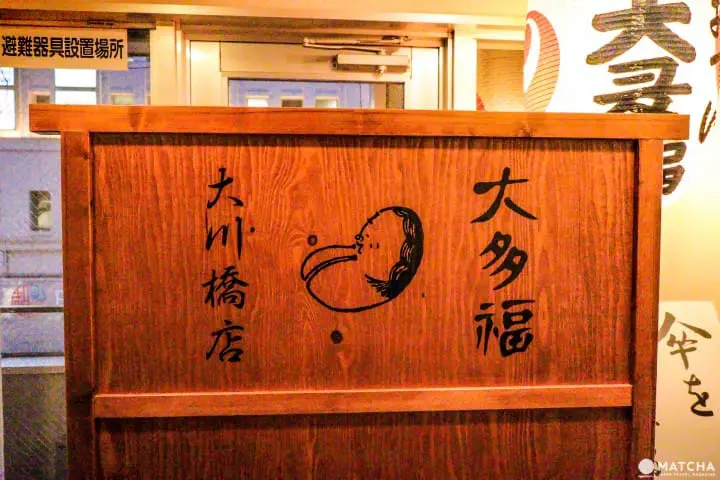
The shop is named after Otafuku, a legendary figure believed to answer prayers for a thriving business. The eatery was also originally founded in Osaka. Why did the founder decide on serving oden among the variety of Japanese dishes?
When the restaurant started, competition in Osaka was high during the Meiji Period. However, oden was fairly unknown at the time, allowing the founder to open an establishment that would break the mold of Osaka’s restaurant industry. The shop then relocated from Osaka to Asakusa, Tokyo around 1915.
Flavors From Eastern and Western Japan
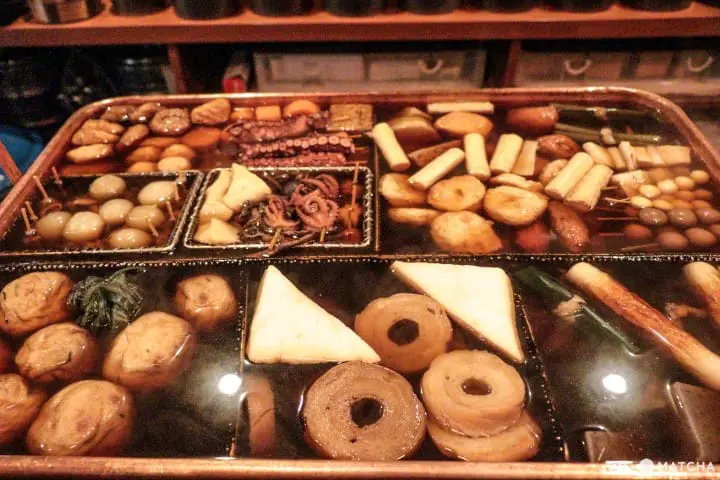
Oden is separated into two categories. First is the Kanto-style oden made with a katsuobushi (dried bonito flakes) and soy sauce base. Second is the Kansai-style oden seasoned with konbu kelp and salt.
Otafuku originally seasoned their oden in the Kansai-style to suit the tastes of people in Osaka. However, they adjusted the flavor after relocating to Tokyo, creating an oden that blends the tastes of eastern (Kansai) and western Japan (Kanto).
Criteria for Selecting Oden Ingredients
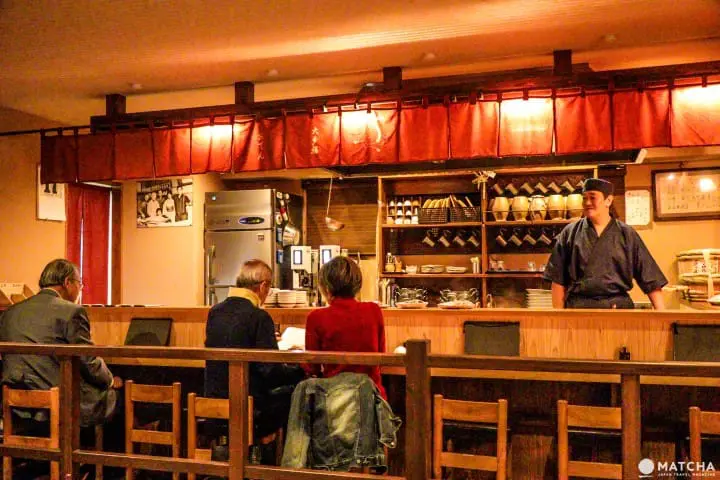
Otafuku offers around 40 different types of oden. The ingredients are selected to draw out the flavor of the dashi stock.
For example, curry dango (a curry-flavored dumpling), pickled red ginger, and shiitake mushrooms have a strong flavor. These ingredients are unsuitable for oden due to their overpowering flavors.
The staff and cooks are also friendly with customers. This may be another reason why the oden tastes delicious.
Recommended Dishes at Otafuku
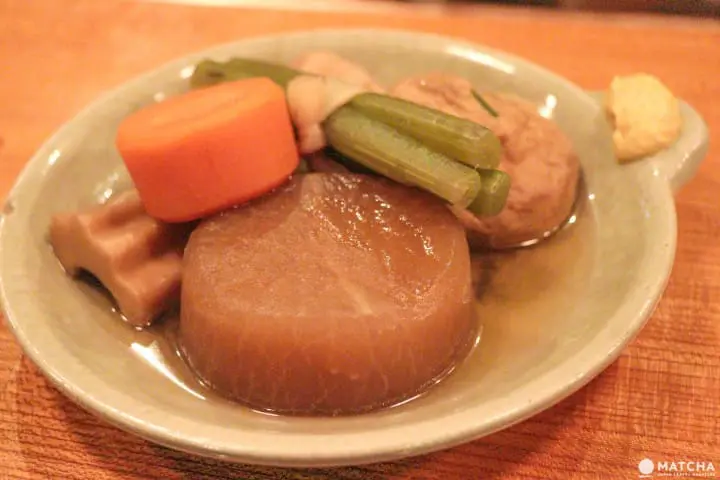
Daikon radish at the center of the photo. From the left in the back is wheat chikuwabu, carrots, Japanese butterbur, and tofu and vegetable ganmodoki (fried tofu fritter).
Daikon radish is a popular oden selection in Japan. Otafuku makes theirs especially delicious! The shop's semi-transparent daikon radish soaked in dashi stock becomes so soft that it can be easily pierced with chopsticks. On the first bite, you'll be able to tell how selective Otafuku is in choosing its ingredients.
Daikon radish: 330 yen including tax
Ganmodoki, made with ingredients such as tofu, carrots, lotus root, and burdock, is another popular item you must try. The soft texture of the tofu and chewiness of the other ingredients go exceptionally well together, allowing you to taste several textural layers.
Ganmodoki: 330 yen including tax
Carrots, Japanese butterbur, and chikuwabu (*1) are other popular ingredients. If you aren't sure what to order, please use this article as a reference.
Carrots: 110 yen including tax
Japanese Butterbur: 280 yen including tax
Chikuwabu: 170 yen including tax
*1 Chikuwabu: a cylindrically shaped ingredient made from wheat flour.
Must-Try Side Dishes at Otafuku
In addition to their oden menu, Otafuku offers dishes that pair well with alcohol for those who want to enjoy a drink. The most popular dishes are the Stewed Beef Tendon (1,000 yen incuding tax) and Tuna Nuta (raw fish seasoned in vinegar and miso; 1,100 yen including tax).
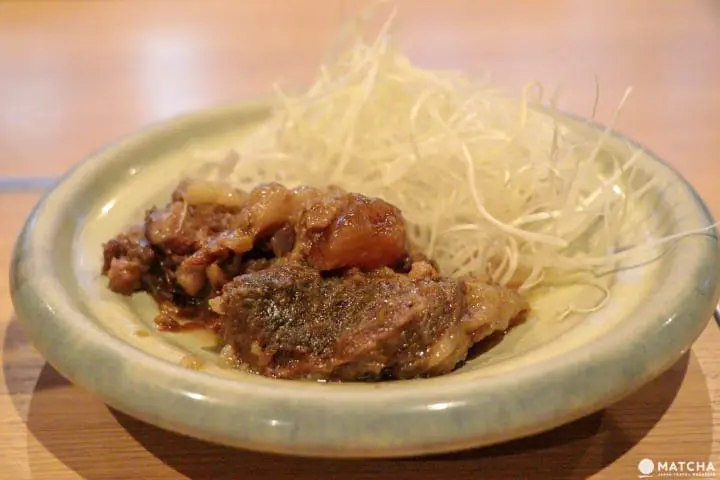
The Stewed Beef Tendon has a strong yet sweet seasoning that is exquisite. The fatty beef tendon will also melt in your mouth.
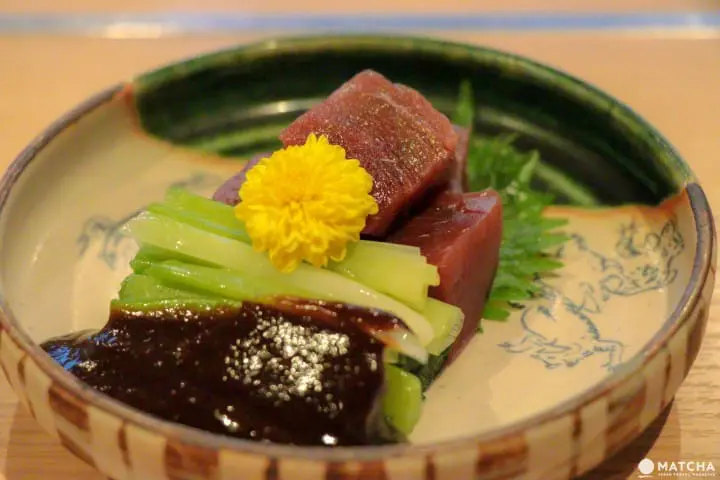
Tuna Nuta uses lean tuna. It is garnished with pickled spring onions and flavorful red miso.
The velvety lean meat, refreshing taste of onions, and the strong flavor of the red miso create three delicious layers.
Don’t Forget Your Wooden Tag When Paying
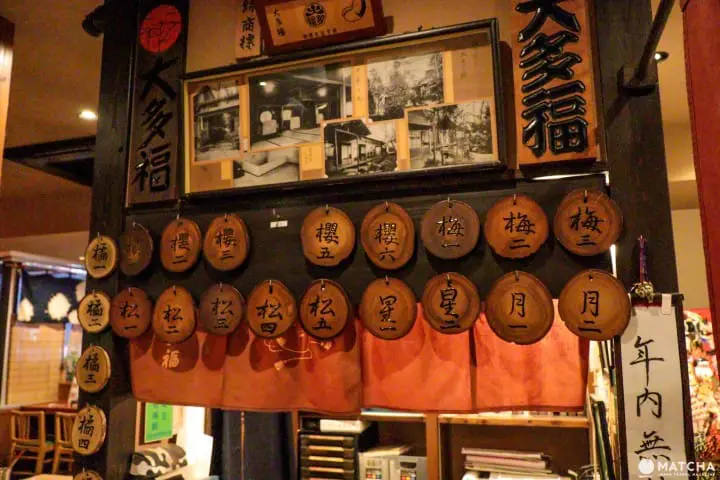
The register near the entrance has a traditional Japanese atmosphere. In fact, the register has been recreated to look like the one the shop used 100 years ago. The round wooden tags hanging up at the front of the register display seat numbers in the shop.
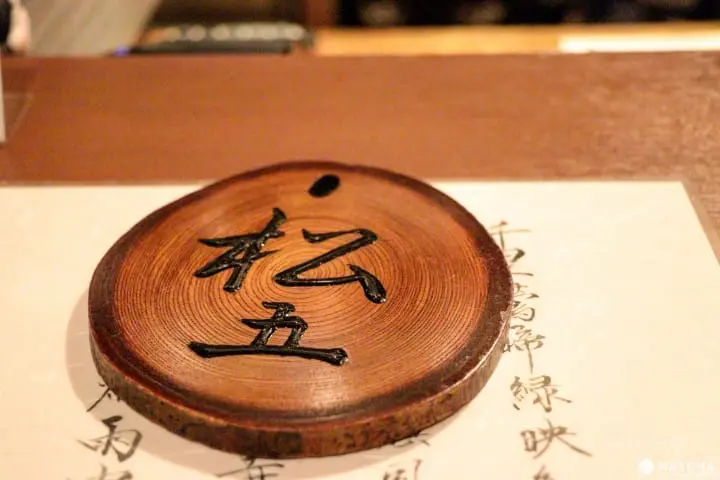
When you arrive at your seat, the staff will bring you a wooden tag. When paying your bill, be sure to take this tag with you to the register!
Savor a Century-Long Tradition of Oden
Oden is a dish that many travelers may consider traditional Japanese cuisine. However, at Asakusa Oden Otafuku, it symbolizes the progress and changes in Japanese food culture.
Asakusa Oden Otafuku continues to create exquisite oden flavors for diners, deliciously preserved and passed down for over a century.
東京に出てきて8年目です。








































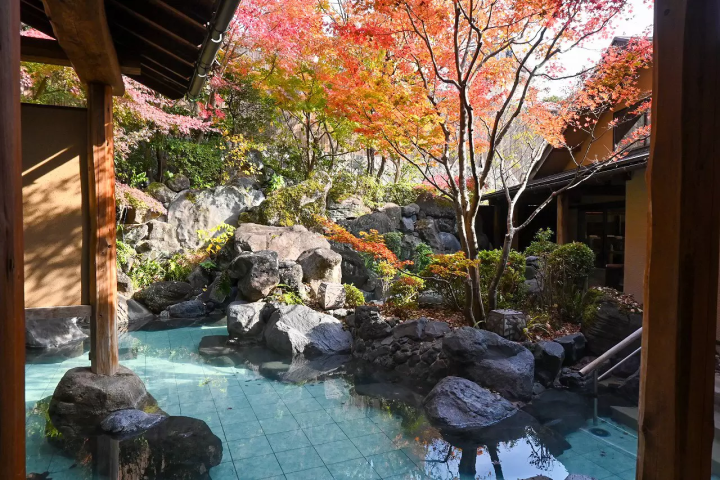
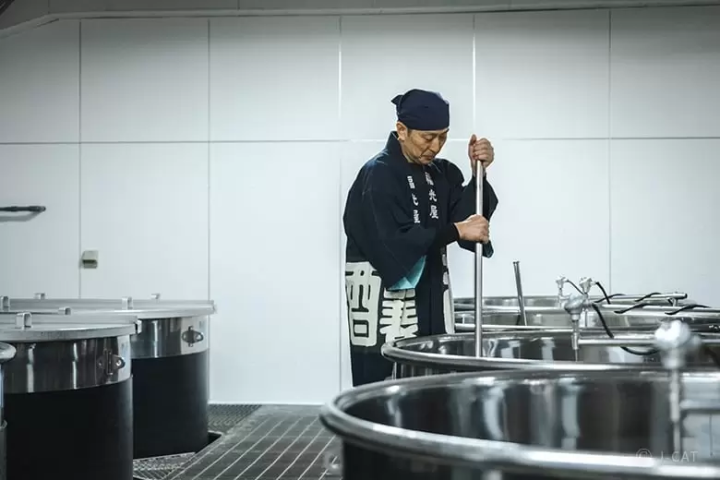
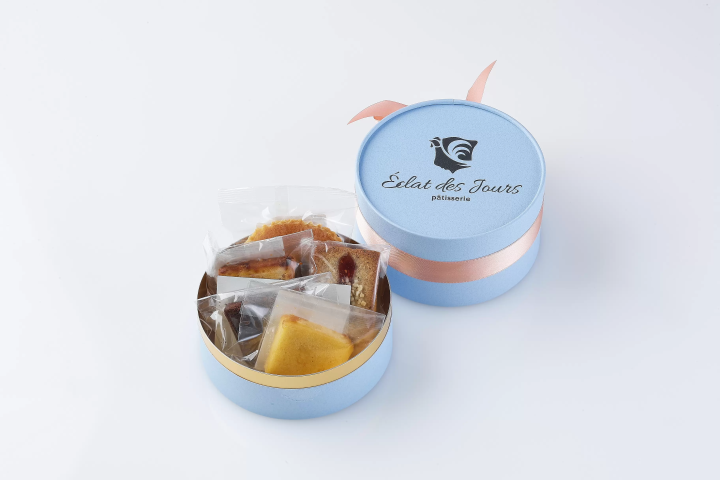

![[Latest] Complete Guide to atmos Exclusive Sneakers and Special Edition Models | Apparel and Upcoming Releases](https://resources.matcha-jp.com/resize/720x2000/2025/12/12-252706.webp)